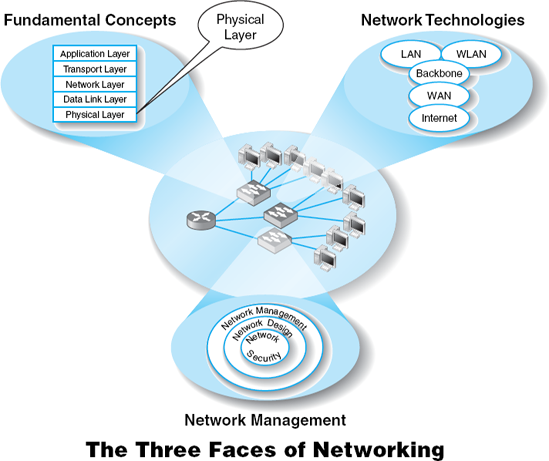Chapter 3. PHYSICAL LAYER

THE PHYSICAL layer (also called layer 1) is the physical connection between the computers and/or devices in the network. This chapter examines how the physical layer operates. It describes the most commonly used media for network circuits and explains the basic technical concepts of how data is actually transmitted through the media. Four different types of transmission are described: digital transmission of digital computer data; analog transmission of digital computer data; digital transmission of analog voice data; and combined analog-digital transmission of digital data. You do not need an engineering-level understanding of the topics to be an effective user and manager of data communication applications. It is important, however, that you understand the basic concepts, so this chapter is somewhat technical.
OBJECTIVES ▾
Be familiar with the different types of network circuits and media
Understand digital transmission of digital data
Understand analog transmission of digital data
Understand digital transmission of analog data
Be familiar with analog and digital modems
Be familiar with multiplexing
CHAPTER OUTLINE ▾
INTRODUCTION
CIRCUITS
Circuit Configuration
Data Flow
Multiplexing
How DSL Transmits Data
COMMUNICATION MEDIA
Guided Media
Wireless Media
Media Selection
DIGITAL TRANSMISSION OF DIGITAL DATA
Coding
Transmission Modes
Digital Transmission
How Ethernet Transmits Data ...
Get Business Data Communications and Networking now with the O’Reilly learning platform.
O’Reilly members experience books, live events, courses curated by job role, and more from O’Reilly and nearly 200 top publishers.

